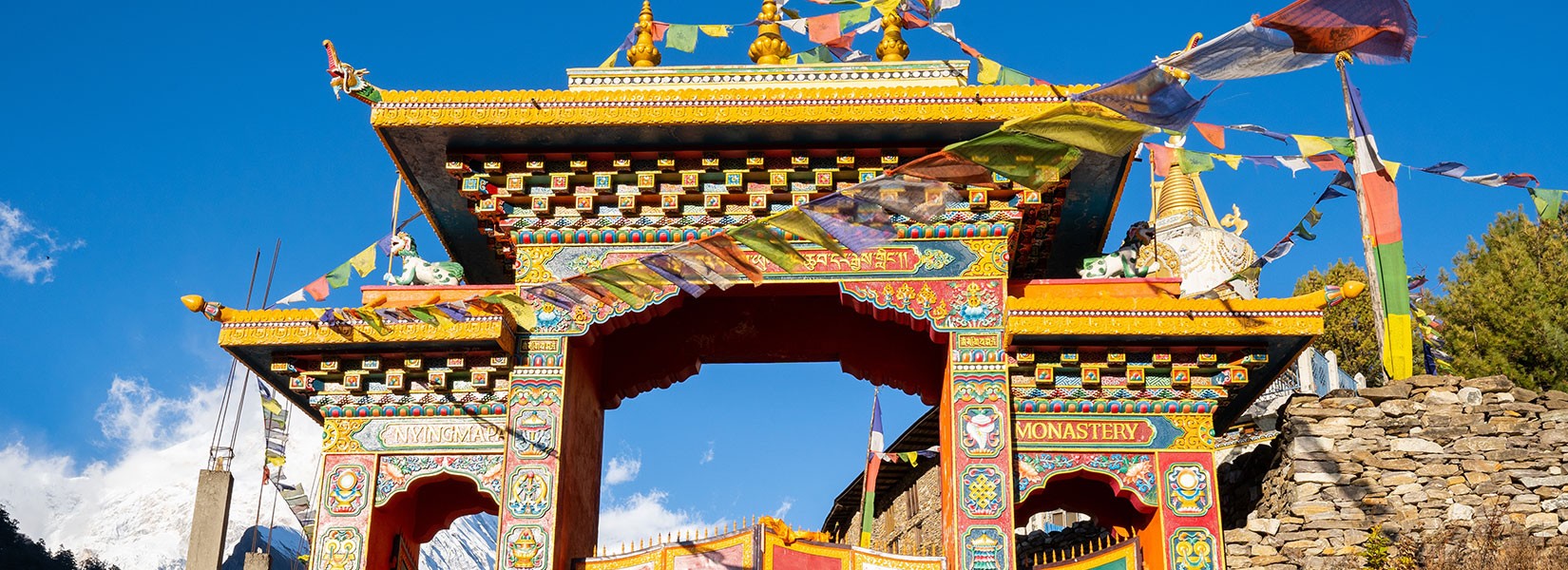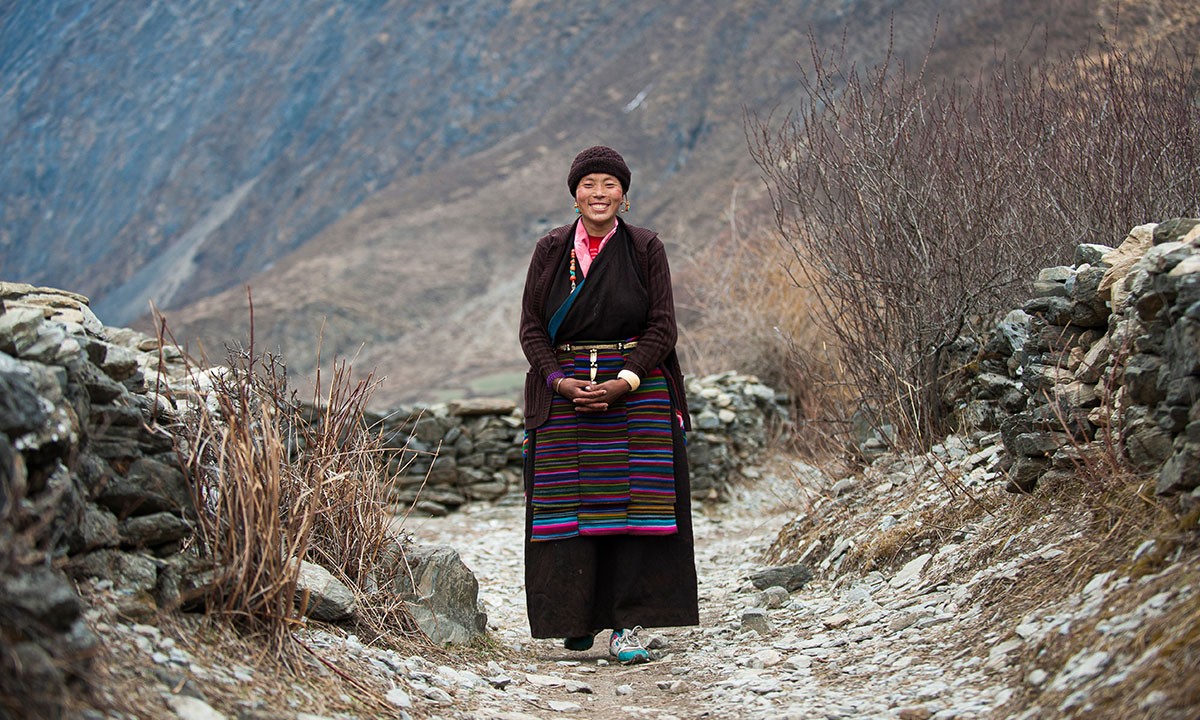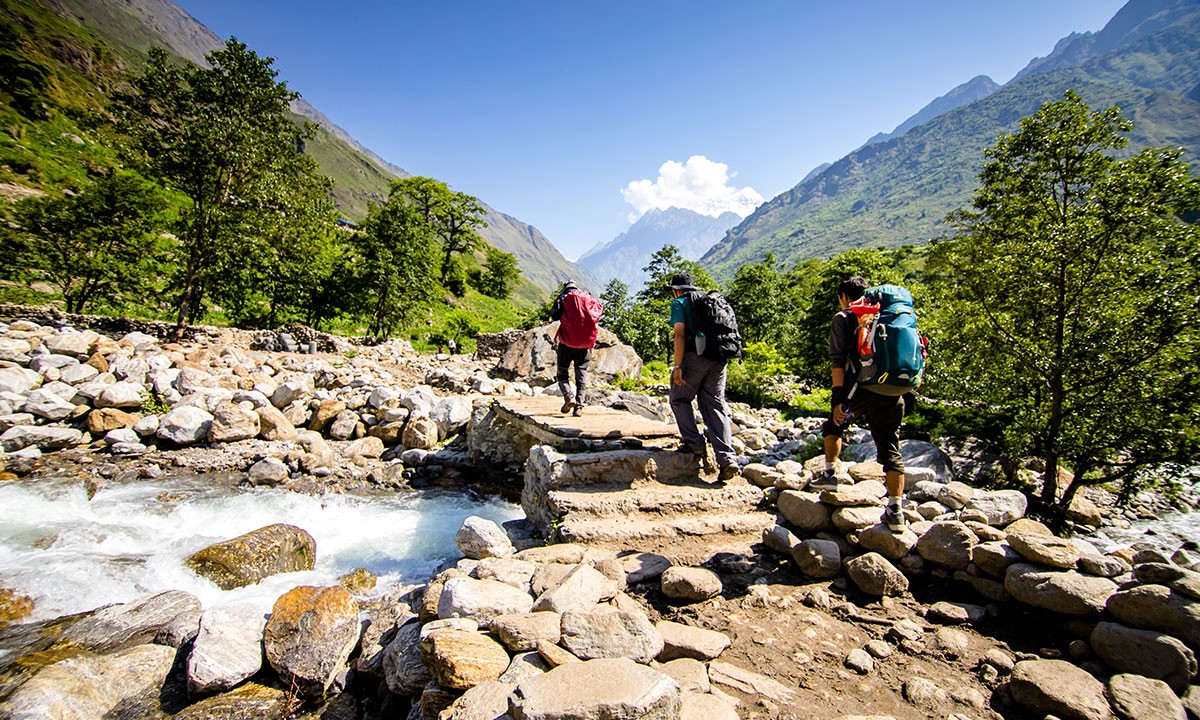
Manaslu and Tsum Valley trek is a mixed adventure that explores the allurements of both the popular Manaslu trekking route as well as the remote part of the Tsum Valley. This immersive trekking experience of the Himalayas is known for its dynamic mountain vistas, dramatic landscapes, layered hills, and cultural prospects enriched by the Tibeatn-influenced traditions. This adventure that starts following the trails of the Soti Khola moves along the Budhi Gandaki River and takes you to Mu Gompa before reaching the highest elevation point of the entire trek at Larkya La Pass (5,213 meters) and concluding the adventure at Dharapani.
The exploration of the Tsum Valley which is also known as the ‘hidden valley’ makes this expedition really exhilarating as you explore the northern prospects of the Manaslu region that is isolated from the crowd of the mainstream routes. So, if you are up for this iconic expedition in solitude that helps you reconnect with Mother Nature, Marvel Adventure offers a fully guided 19 Day- Manaslu and Tsum Valley Trek for a memorable and gratifying experience.
Marvel Adventure organises Manaslu and Tsum Valley Trek with the carefully designed itinerary and professional guides. So, come and explore with us to make sure that you have one of the most memorable trek in the nation of Himalayas. Feel free to contact us if you have any queries regarding this trek.
Best Season for Manaslu and Tsum Valley Trek
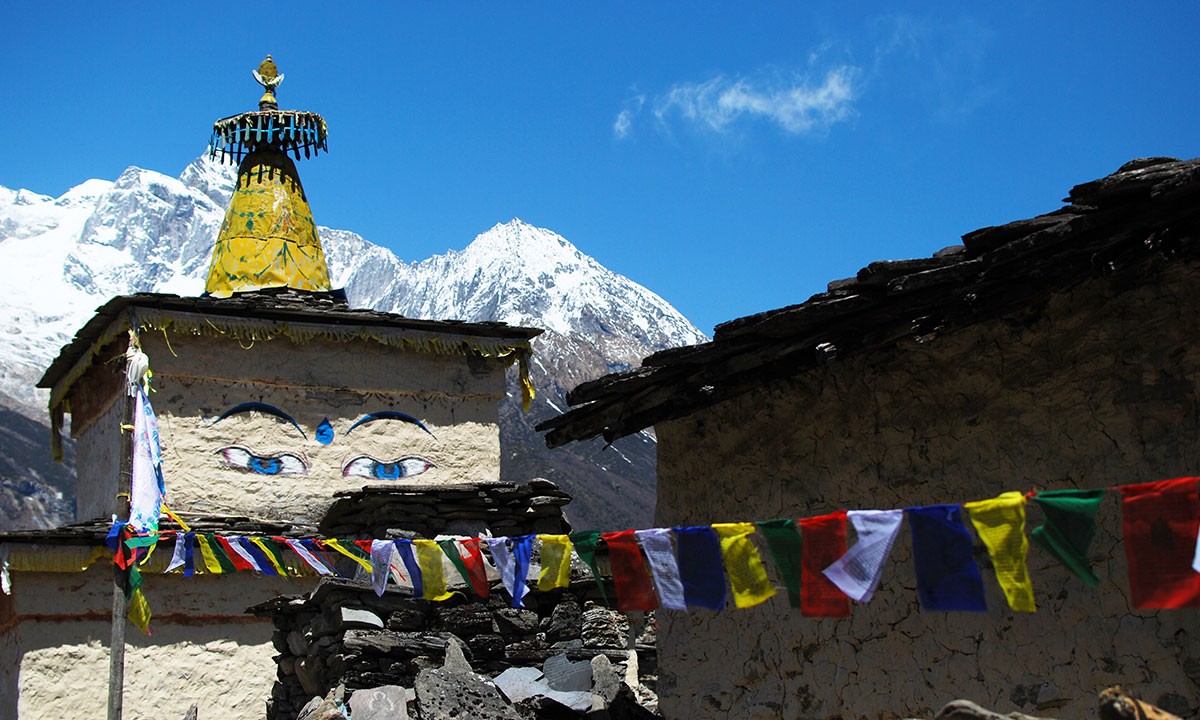
This beautiful expedition in the solitude of the Manaslu region is best suited for the ideal peak seasons as other seasons further elevate the difficulty factors of its remote route. Manaslu and Tsum Valley Trek are most enjoyable during the peak season like spring (March- May) and autumn (September- November). As you will be traversing across the six climatic zones (tropical, sub-tropical zone, temperate, sub-alpine, alpine, and arctic zone) in this epic adventure of the Himalayas, the weather and temperature of the region are significant factors when it comes to an enjoyable and comfortable experience.
The weather and temperature during both spring and autumn seasons are warm and on the warmer side, similarly, the days are bright with mostly clear skies. The temperature of the Manaslu region is around 15°C- 20 °C in the daytime and can drop upto 6°C or minus degrees at night and early mornings. In comparison, the autumn season is on the breezy side as the mild temperature of 13°C- 19 °C encourages the day’s adventure; the mornings and nights in this season are especially chill and breezy making it one of the best seasons for trekking adventure.
If you are planning your adventure for the off-season like monsoon (June- August) and Winter (December- February), you might not be able to enjoy the Manaslu and Tsum Valley Trek exploration as much as other peak seasons. Especially during the monsoon which sees every rainfall can halt the advancement for a tiring number of days, similarly, the slippery trails and risk of landslides contribute to the risk factors during this season. Monsson is the summer season in Nepal, so when you are not dealing with the depressing downpours the hot temperature will make the trekking a bit challenging (temperature during the monsoon, 15°C- 25°C).
On the other hand, winter is the harshest season for the adventure due to the cold freezing climate. The normal temperature of the region is around -6°C to -10°C during even the daytime at the higher elevations and trails are mostly covered in snow making it even difficult to overcome even a simple trekking route.
Trek Difficulty
Unlike other high-trekking adventures in Nepal, you don’t have to spend a significant amount of time above 4,000 meters elevation in Manaslu and Tsum Valley Trek. This beautiful expedition is at a moderate elevation, however, it also doesn’t mean that this Himalayan expedition is like a walk in the park either. Due to its difficulty factors like trek distance, relatively high elevation, and remoteness, including physical and mental challenges, the Manaslu and Tsum Valley Trek has been graded a ‘moderate’ level of difficulty.
It means that without a proper amount of preparation and determination, this trekking expedition can be a challenging adventure. Here are some brief elaborations on the major difficulty factor of this trekking expedition.
Trekking Distance:
This 19-day Manaslu and Tsum Valley Trek is a long expedition of the Himalayas that can be physically exhausting if you haven't trained enough. Although it is a slow-paced adventure, you will be trekking for about 5- 6 hours (approx 15- 20 km) on average during each day of the expedition. Still, you get two days to acclimatize properly and get enough rest in between to move along the trail more comfortably.
Risks of Altitude Sickness:
It is not new news that with the rise in the elevation points the risk of getting altitude sickness also potentially rises. As the risk for altitude sickness increases over 2,500 meters, you need to pay heed to the causes of altitude sickness like dizziness, nausea, fatigue, shortness of breath, and insomnia. Staying hydrated throughout the expedition, eating a healthy balanced diet, and getting enough rest is the best remedy to tackle altitude sickness.
Remoteness:
As Manaslu and Tsum Valley Trek is a remote exploration that explores the northern prospects of the Manaslu region, the services of the region are pretty much limited. In general, the food and accommodation facilities throughout this remote exploration are pretty much basic, the same goes for transportation, medical facilities, and other modern amenities. So, you have to make peace with yourself for this journey in solitude that takes you farther from a luxurious and modern lifestyle.
Is This Trek Suitable for Me?
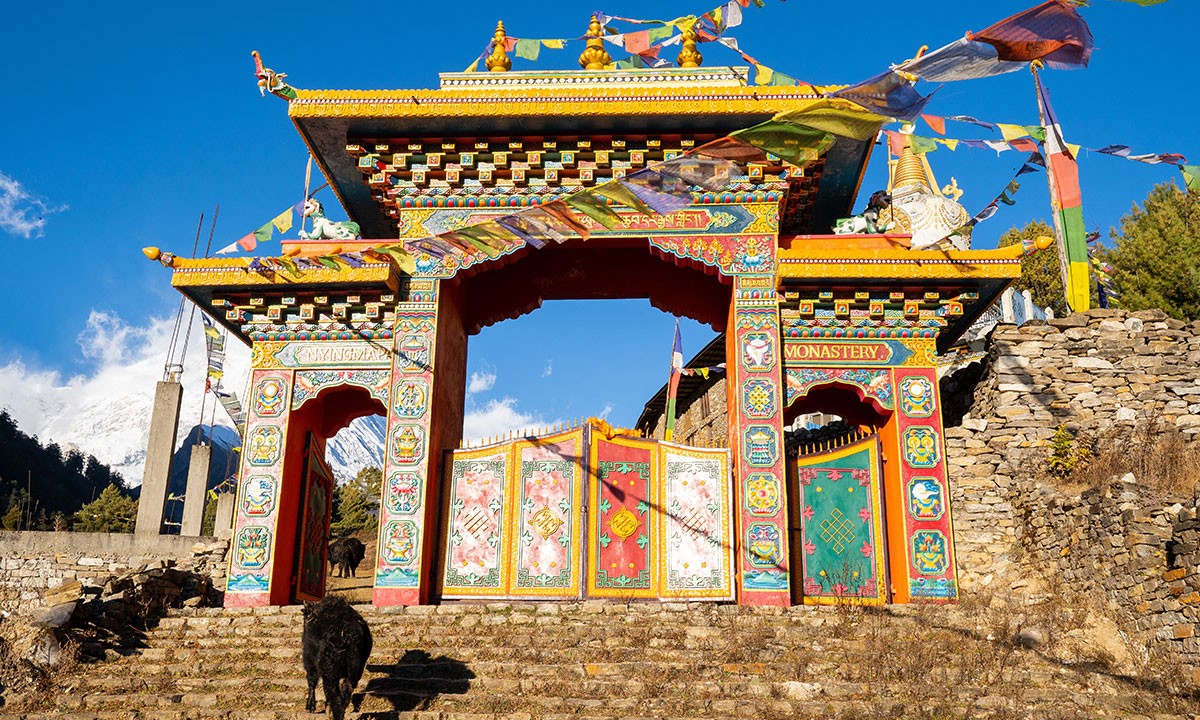
Manaslu and Tsum Valley Trek is a unique and epic adventure that explores the core of both popular Manaslu and Tsum Valley. So, in case you are wondering if you are well-suited for this amazing Himalayan expedition, fret not, Manaslu and Tsum Valley Trek which has a moderate difficulty level is not as challenging and strenuous as a mountain expedition. With a basic level of fitness and a good amount of preparation, anyone can complete this glorious Himalayan exploration. As for the age limit, there isn’t a specific age requirement for this trekking adventure, however, this high-altitude trek is not recommended for children below the age of 10; even trekkers over the age of 70 have successfully completed this trek.
As for the experience, you don’t need prior trekking experience or any technical skills to complete this trek, it also doesn’t matter whether you exercise regularly or if you are into sports. The only thing you have to pay heed to is preparing for this spectacular adventure in the recommended time frame. Nobody understands your physical capabilities more than yourself, so in the recommended period you can work on polishing and enhancing your stats. Also, this is a fully guided trekking adventure, guides and crew members of Marvel Adventure will pay special attention to your comfort level for the best value experience, so in case of any discomfort or complication, you will be able to easily communicate with our reliable team.
Training and Preparation
With a proper amount of training, you will be able to significantly reduce the difficulty level of this epic adventure in the Himalayas. You won’t find Manaslu and Tsum Valley Trek very difficult if you have previous experience in high-altitude adventure. However, if you are a trekking enthusiast who has never been in a high-altitude exploration, you need to prepare at least 4- 6 weeks before this trek starts. If you already are in sports or exercise, then you can assess your own physical ability and determine how much you have to train.
Here are some of the exercises that you can include in your training program for the trek:
Strength and Endurance Exercises: When it comes to the high altitude long day of adventure, you need to enhance your strength and endurance level. You won’t get drained away easily and can endure the long hours of adventure carrying your stuff; your exploration becomes more enjoyable when you are not trying to catch a breather every other minute.
Exercise like planks, deadlifts, weight lifts, pushups, bicep curls, squats, lunges, etc. works best for strength and endurance training. You can also hike up on natural inclining trails carrying a significant weight in your backpack, this will help you get accustomed to the trail demand of the Himalayan region.
Cardiovascular Exercises: Focussing on cardiovascular exercises improves your body’s capability to acclimatize properly to the high altitude. These exercises improve your flexibility and enhance your adaptability for the long hours of trekking with the rising altitude. Jogging, cycling, jumping rope, dancing, lunges, rowing, etc. are some exercises you could include in your training program to improve your cardiovascular ability.
Note: For this trekking adventure in the Himalayas, it is recommended that you should at least have a basic level of fitness with good health conditions. If you have any medical conditions you should consult your physician about the expedition.
You may also like:


